Chapter: 11th Chemistry : UNIT 11 : Fundamentals of Organic Chemistry
IUPAC rules for nomenclature of organic compounds
IUPAC rules for nomenclature of organic compounds
The following steps should be followed for naming an organic compound as per IUPAC nomenclature.
1. Choose the longest carbon chain. (Root word). Consider all the other groups attached to this chain as substitutents.
2. Numbering of the longest carbon chain
3. Naming of the substituents (prefixes or suffixes)
4. Arrange the substitutents in the alphabetical order
5. Write the name of the compound as below
"prefix + root word + primary suffix + secondary suffix"
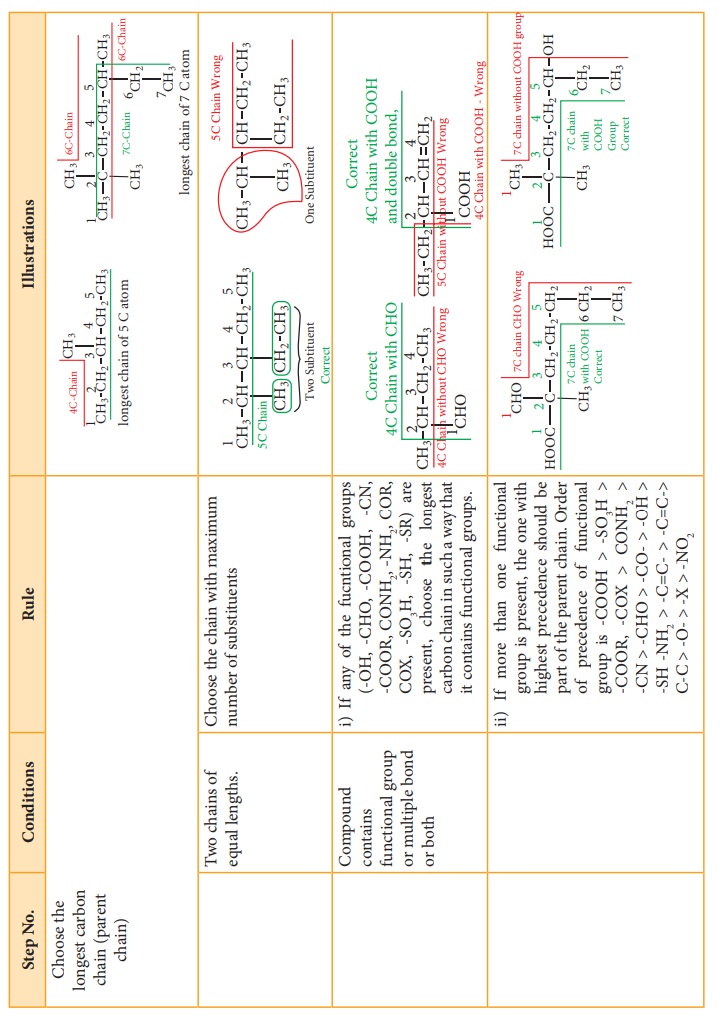
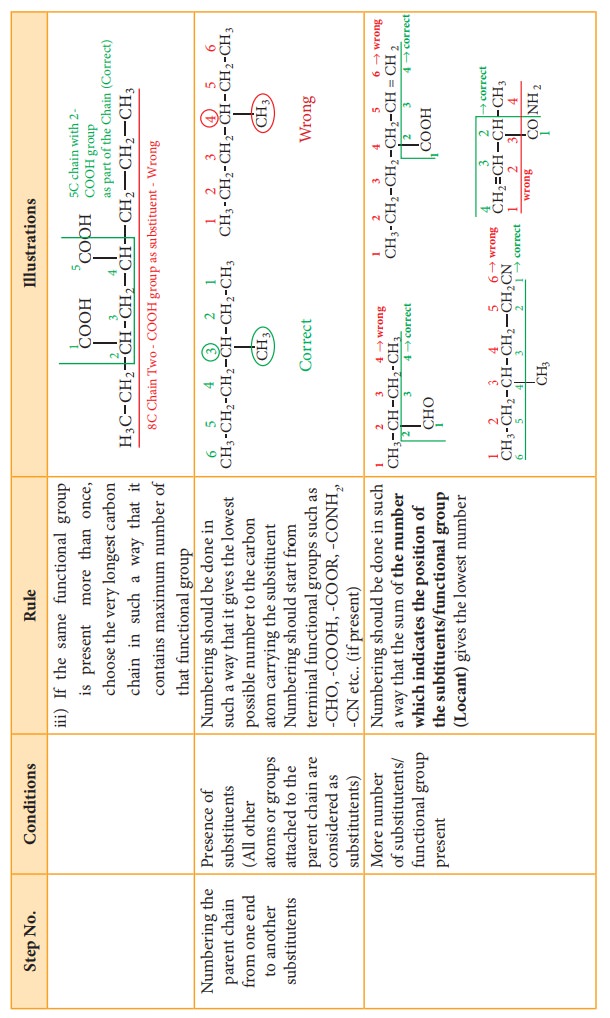
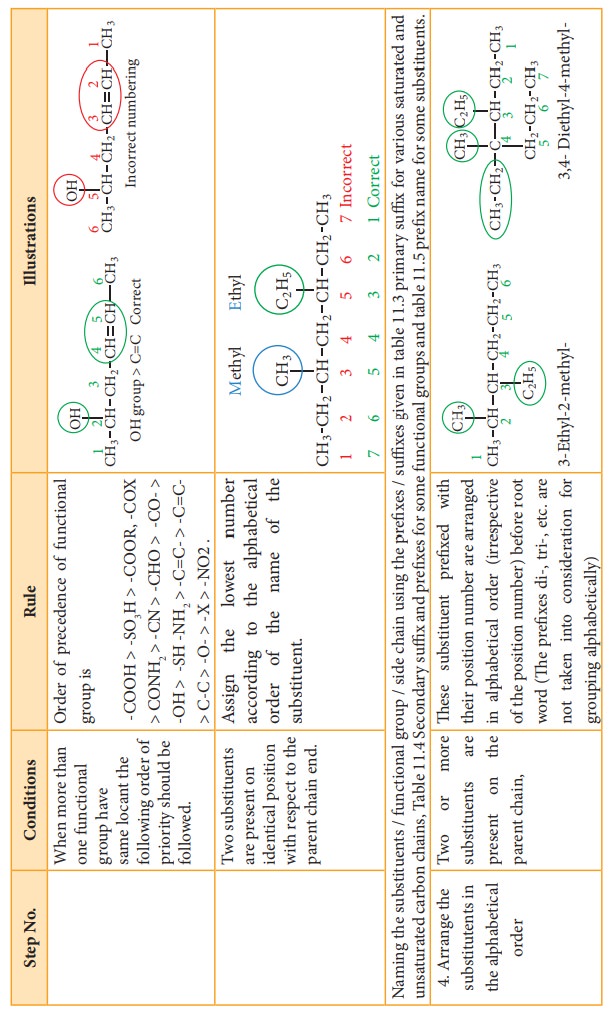
The following are guide lines for writing IUPAC of the organic compound.
1. The IUPAC names are always written as single word, with notable exception of organic salts, acids and acid derivatives.
2. Commas are used between two adjacent number or letter symbols, and hypens are used to separate numbers and letter symbol in names Eg: 2,2-Dimethyl-3-hexene N,N-Dimethyl methanamide
3. Structural prefix such as, meso-, cis-, trans-, are italicised and joined to the name by a hypen. These prefixes are omitted in alphabetising compound names or in capitalising names at the beginning of a sentence.Eg:trans-2-Butene
4. Structural prefixes such as di, tri, tetra are treated as a part of the basic name and therefore are neither italicised nor separated by a hypen. These prefixes are not taken into account in alphabetising compound names eg: 4- Ethyl -2,2-dimethyl hexane.
5. To name alicyclic compounds , the additional rules should be followed as illustrated in the table 11.x
Table 11.6 Rules for naming of alicyclic compounds:
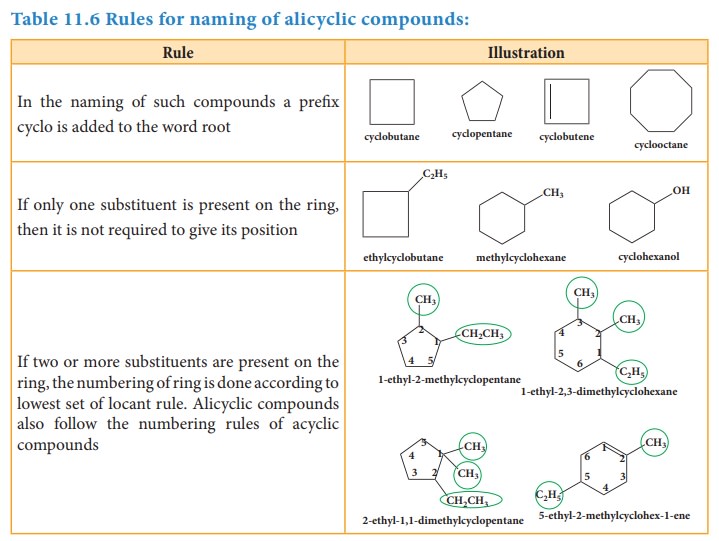
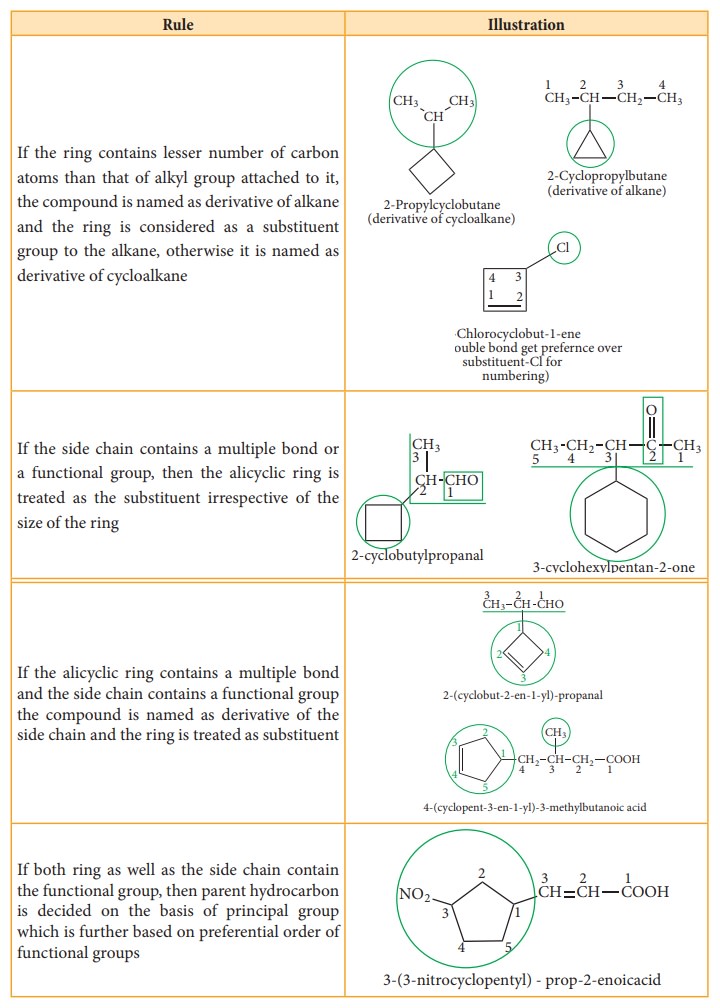
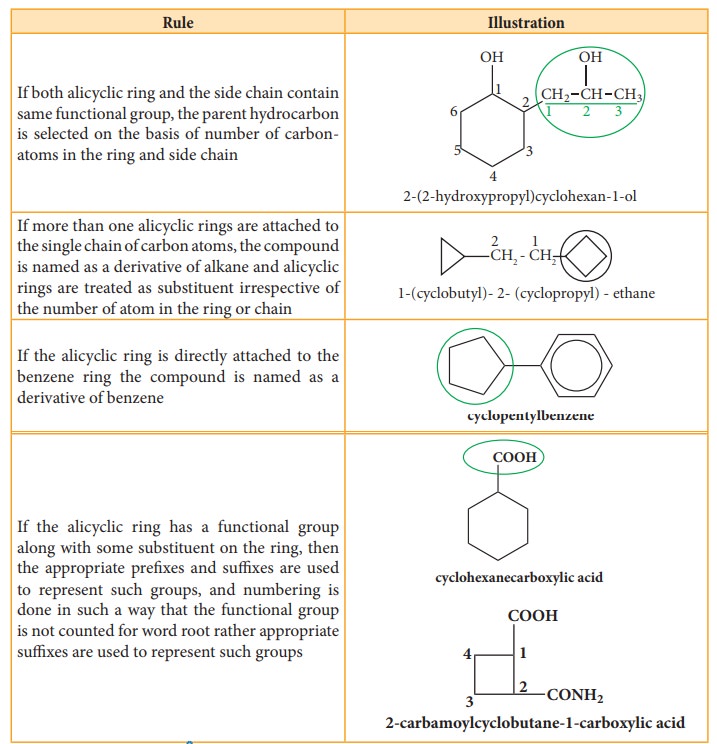
In the naming of such compounds a prefix cyclo is added to the word root

If only one substituent is present on the ring, then it is not required to give its position

If two or more substituents are present on the ring, the numbering of ring is done according to lowest set of locant rule. Alicyclic compounds also follow the numbering rules of acyclic compounds
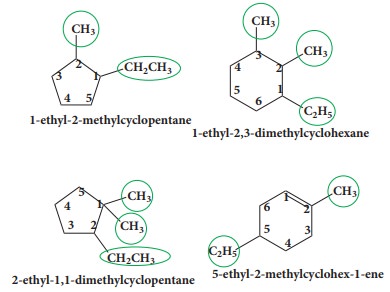
If the ring contains lesser number of carbon atoms than that of alkyl group attached to it, the compound is named as derivative of alkane and the ring is considered as a substituent group to the alkane, otherwise it is named as derivative of cycloalkane

If the side chain contains a multiple bond or a functional group, then the alicyclic ring is treated as the substituent irrespective of the size of the ring
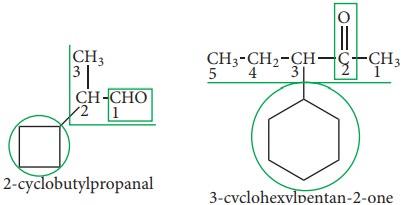
If the alicyclic ring contains a multiple bond and the side chain contains a functional group the compound is named as derivative of the side chain and the ring is treated as substituent
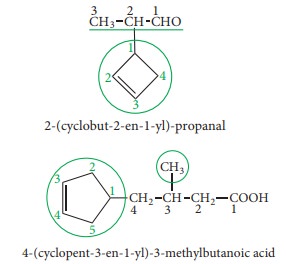
If both ring as well as the side chain contain the functional group, then parent hydrocarbon is decided on the basis of principal group which is further based on preferential order of functional groups
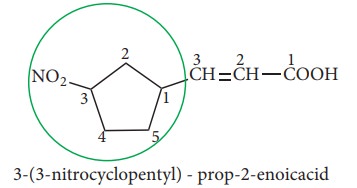
If both alicyclic ring and the side chain contain same functional group, the parent hydrocarbon is selected on the basis of number of carbon-atoms in the ring and side chain
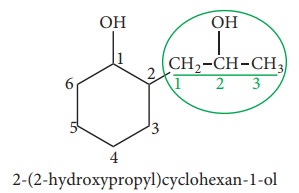
If more than one alicyclic rings are attached to the single chain of carbon atoms, the compound is named as a derivative of alkane and alicyclic rings are treated as substituent irrespective of the number of atom in the ring or chain

If the alicyclic ring is directly attached to the benzene ring the compound is named as a derivative of benzene
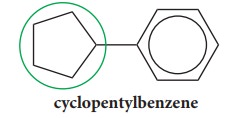
If the alicyclic ring has a functional group along with some substituent on the ring, then the appropriate prefixes and suffixes are used to represent such groups, and numbering is done in such a way that the functional group is not counted for word root rather appropriate suffixes are used to represent such groups
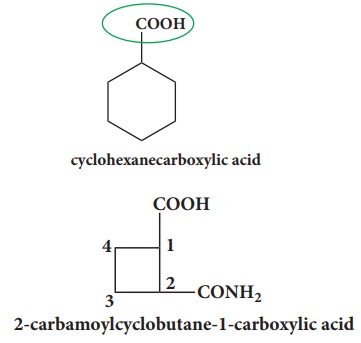
Related Topics